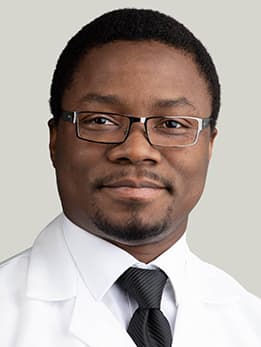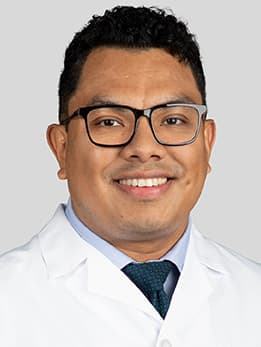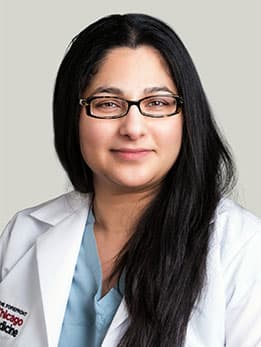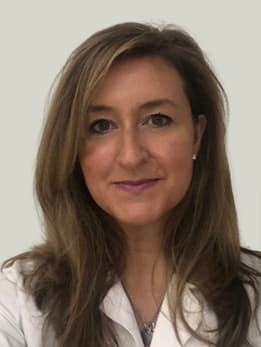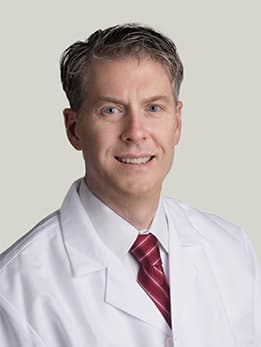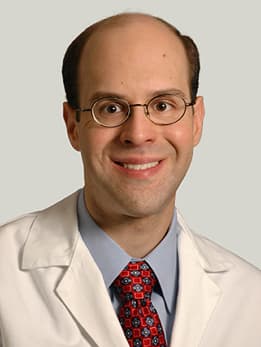Scleroderma Program
The Scleroderma Program at the University of Chicago Medicine is one a handful of programs in Illinois devoted to the care of patients with scleroderma.
What is Scleroderma?
Scleroderma is a condition with an autoimmune basis. Autoimmune diseases include a wide variety of conditions where the body’s immune system, which normally fights infections, instead attacks normal tissues of the body. Scleroderma is one of these conditions that involves fibrosis and inflammation, normally in the skin and in other organs. Affected individuals often have Raynaud’s phenomenon which involves painful color change in the fingers and/or toes, generally triggered by cold ambient temperature. Outside of the skin thickening, typical for scleroderma, the lungs and the gastrointestinal system are the most common sites of organ involvement.
Scleroderma is also known as systemic sclerosis to better reflect the systemic nature of this disease, and to help separate it from other conditions that can appear similar to this condition. One example of this is a fibrotic skin disorder known as morphea, also known as localized scleroderma which does not involve the internal organs, and also affects the skin.
Scleroderma is characterized by three main subtypes based on the degree of skin involvement including the following:
How is Scleroderma diagnosed?
We use a multidisciplinary approach to diagnose and treat Scleroderma. This involves bringing in many kinds of specialists to study a patient’s situation and create the best plan for care. Our team includes a rheumatologist who specializes in scleroderma. Our team often includes a rheumatologist who specializes in scleroderma. Other team members depending on organ involvement most often include a dermatologist, pulmonologist, gastroenterologist and/or a cardiologist.
Diagnosis begins with a rheumatologist taking your complete medical history, including family history, followed by a physical exam. At your first visit, we ask you to bring the following:
- Medical notes, including hospital admission, progress and discharge notes
- List of medications
- Relevant lab reports
- Imaging studies reports and physical discs
- Full reports on pulmonary breathing tests
- Reports on tissue biopsies such as skin, muscle and lungs, as well as physical tissue slides of paraffin embedded tissue blocks when applicable
- Contact information for the patient’s local medical specialists
Based on your symptoms, we may order additional tests, such as CT scans of your chest, ultrasound studies of your heart, and breathing tests. Some patients may require a more invasive test known as a right heart catheterization depending on these results. Some blood tests also can be helpful in providing additional information about the diagnosis, including looking for certain autoantibodies that can be positive in scleroderma.
How is Scleroderma treated?
Once we arrive at a diagnosis and classify organ involvement in scleroderma, we develop a comprehensive medical plan to help you control the disease and improve your quality of life.
This may include:
- Immunosuppressive medications such as methotrexate, mycophenolate mofetil, azathioprine, immunoglobulins, tocilizumab, and rituximab
- Medications to control Raynaud’s phenomenon symptoms such as amlodipine, nifedipine, tadalafil and sildenafil
- Antifibrotic medications such as nintedanib in patients with certain kinds of lung disease
- Medications for patients with elevated blood pressure in the pulmonary artery such as tadalafil, ambrisentan, and Treprostinil
- Oxygen and respiratory therapy for those with severe lung diseases
Research and collaborations
In addition to providing state-of-art clinical care to patients with scleroderma, our team is also devoted to research in scleroderma. We work closely with the Gwen Knapp Center for Lupus and Immunology Research at the University of Chicago, a leading immunology research program focused on integrating basic science, translational and clinical research.
All our patients with scleroderma are invited to join the University of Chicago Scleroderma Registry. This registry helps our scientists to advance the field of scleroderma research and collaborate with national and international initiatives aimed at improving our understanding of the causes and different manifestations of scleroderma.
Patients with scleroderma with associated interstitial lung disease are also invited to participate in the University of Chicago Interstitial Lung Disease Registry.
We are also working with industry partners to offer patients the option of enrolling in trials examining promising therapies for scleroderma treatment. One area of interest involves innovative approaches like CAR T-cell therapy. Learn more about this cutting-edge research in the article, Clinical trial to study new use for CAR T-cell therapy: treating autoimmune diseases. Additional non-industry studies, made possible by the multidisciplinary nature of the Scleroderma Program, may also be available to patients.
Located in the heart of Hyde Park on the south side of Chicago, the University of Chicago Medicine and our Scleroderma Program are committed to building a more equitable health care system for our patients.
Information for Referring Physicians
New Patient Referral
If you would like to refer a patient to our Scleroderma Program/Rheumatology Clinic, please fax records to (773) 834-7065 and contact our scheduling team at (773) 702-6119. A list of the records needed is detailed below.
Urgent Consult
If you would like to request an urgent consult with rheumatology or other specialties within our Scleroderma Program, please call (773) 702-6119 and leave your direct number. One of our team members will call you back as soon as possible.
Information for Patients
If you would like to be seen as a new patient at the Scleroderma Program/Rheumatology Clinic, please contact our scheduling team at (773) 702-6119 to schedule your visit. If you would also like to be seen by specialties other than rheumatology, please let our scheduling team know at the time of your call. Please ask your doctor to fax all your medical records to (773) 834-7065. A list of required records is detailed below. Feel free to fax your own records to the same number as well.
List of Records Needed
- Medical notes, including hospital admission, progress and discharge notes
- List of medications
- Relevant lab reports
- Imaging studies reports and physical discs
- Full reports on pulmonary breathing tests
- Reports on tissue biopsies such as skin, muscle and lungs, as well as physical tissue slides of paraffin-embedded tissue blocks when applicable
- Contact information for the patient’s local medical specialists

